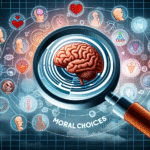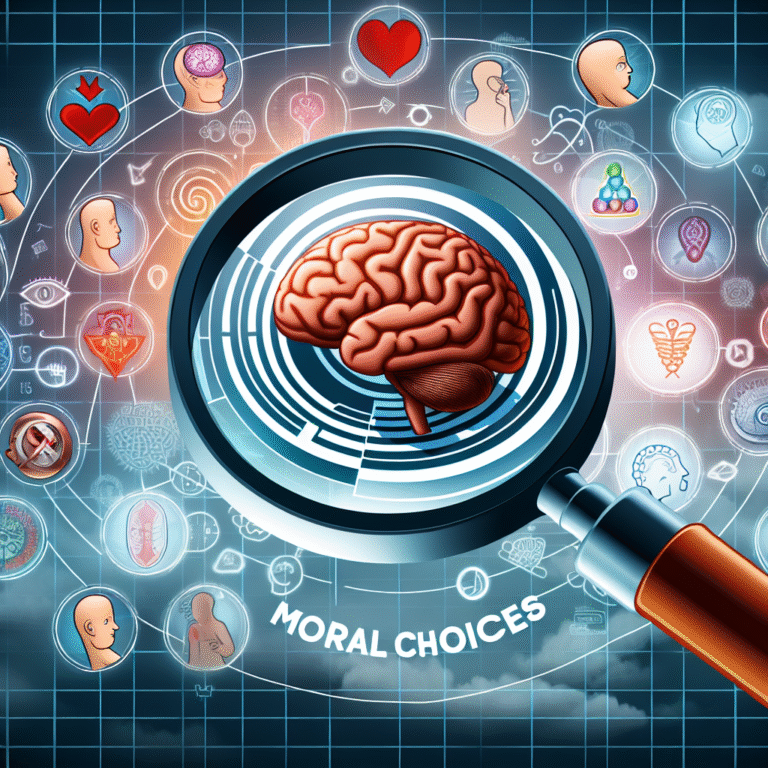
In a world where behavior is shaped by countless interactions and observations, understanding the mechanisms behind social learning is not just interesting but essential. From Childhood to Adulthood: The Lifelong Influence of Social Learning Theory unveils the profound impact this theoretical framework has on our lives. Whether we’re aware of it or not, the lessons we learn from our environment and the people we interact with significantly shape our personalities, behaviors, and decision-making processes.
Introduction
Imagine a young child watching their parents interact. The child observes how they communicate, resolve conflict, and express emotions. This foundational observation doesn’t just remain in the realm of childhood; it echoes throughout their life, influencing their behaviors in adolescence and adulthood. This is precisely where social learning theory steps in.
Founded by Albert Bandura, social learning theory proposes that we learn not just through direct experience, but also by observing the behaviors of others. As we transition from childhood to adulthood, the contributions of this theory become increasingly evident. By exploring its principles, implications, and real-world applications, we can gain a comprehensive understanding of how our social environments mold our behaviors and identities.
The Basics of Social Learning Theory
What is Social Learning Theory?
At its core, social learning theory emphasizes the importance of modeling, imitation, and observational learning. According to Bandura, learning occurs within a social context and can happen purely through observation, even without direct reinforcement. Bandura’s famous Bobo doll experiment vividly illustrated this phenomenon, showing that children imitate aggressive behaviors they observe in adults.
Key Components
- Attention: To learn by observation, we must first pay attention to the behavior being modeled.
- Retention: We must be able to remember the observed behavior once we’ve seen it.
- Reproduction: This involves the ability to reproduce the observed behavior when required.
- Motivation: Motivation plays a crucial role; observing rewarded behavior increases the likelihood of replication.
Case Study: The Bobo Doll Experiment
The Bobo doll experiment conducted by Albert Bandura in 1961 provides classic evidence for social learning theory. In this study, children who observed adults behaving aggressively towards a Bobo doll were more likely to demonstrate similar aggressive behaviors themselves, even when there were no rewards for doing so.
Relevance Analysis: This case study reveals how powerful modeling is in formative years. The early lessons learned through observation set the stage for behaviors that persist into adulthood. For instance, aggression learned in childhood can lead to similar conflict resolution styles in adult relationships.
The Role of the Environment
As we move from childhood to adulthood, the environment plays a crucial part in shaping our behaviors.
Family Influence
In childhood, family constitutes the primary social learning environment. The behaviors, values, and communication styles exhibited by parents influence the child’s developmental trajectory. A nurturing environment encourages empathy and cooperation, while a conflict-ridden household may foster aggression or withdrawal.
Peer Influence
As children grow, peers increasingly influence behaviors, particularly during adolescence. This stage is characterized by heightened sensitivity to social approval and conformity. Observational learning occurs around issues such as substance use, social relationships, and academic behaviors.
Table: The Influence of Different Social Circles
| Social Circle | Age Range | Influences |
|---|---|---|
| Family | 0-12 years | Core values, emotional responses |
| Peers | 12-18 years | Social behaviors, peer pressure |
| Workplace | 18+ years | Work ethics, professional behaviors |
Transitioning to Adulthood
As we transition to adulthood, social learning does not stop; it merely adapts. Work environments, romantic relationships, and social communities become critical stages for learning new behaviors.
Workplace Dynamics
In the workplace, observational learning shapes how one navigates professional interactions and ethical standards. Employees often mimic the behaviors of successful colleagues or leaders, adopting traits they perceive as beneficial.
Case Study: Mentorship Programs
Mentorship programs in organizations illustrate the beneficial effects of social learning in adulthood. Employees paired with seasoned mentors can observe and learn effective communication and leadership styles.
Relevance Analysis: Such programs serve as a real-world application of social learning theory, demonstrating that the influence of social observation extends deeply into adulthood, forging paths to success through learned behaviors.
Social Media: A New Learning Environment
With the rise of technology and social media, from childhood to adulthood, the avenues for observational learning have expanded dramatically. Children and adolescents are exposed to diverse behaviors and ideas through platforms like TikTok, Instagram, and YouTube.
The Positive and Negative Effects
While social media can promote positive behaviors—like activism and healthy lifestyle choices—it can also reinforce negative stereotypes and harmful behaviors. Thus, understanding the implications of social learning in a digital age becomes essential for social development.
Conclusion
The journey from childhood to adulthood is profoundly influenced by social learning theory. Understanding how behaviors are learned and modeled provides us leverage to create environments that foster positive outcomes. By being aware of who and what influences us, we can strive to cultivate healthier relationships and communities.
Actionable Insights
- Model Positive Behavior: Whether as a parent, teacher, or leader, be conscious of the behaviors you demonstrate. They will be observed.
- Seek Positive Influences: Surround yourself with individuals who embody the behaviors you wish to adopt.
- Critically Evaluate Media: In an age where social media permeates all aspects of life, critically assess the content that influences your beliefs and attitudes.
FAQs
1. How does social learning theory apply in real life?
Social learning theory applies in various real-life contexts, such as parenting, education, and workplace dynamics, by illustrating how behaviors are learned through observation and interaction.
2. Can we unlearn negative behaviors?
Yes, negative behaviors can be unlearned through conscious effort to observe and model positive behaviors, coupled with consistent practice and reinforcement.
3. How important is the role of peers during adolescence?
Peer influence is crucial during adolescence as individuals start to shape their identities, often emulating behaviors they perceive as socially acceptable or desirable.
4. Does social media have a positive impact on social learning?
While social media can promote positive initiatives and provide helpful information, it can also expose users to harmful behaviors and unrealistic standards. Critical evaluation is essential.
5. How can parents apply social learning theory at home?
Parents can apply social learning theory by demonstrating positive behaviors, encouraging open communication, and creating a supportive environment that fosters learning through observation.
Final Thoughts
From Childhood to Adulthood: The Lifelong Influence of Social Learning Theory highlights that our learning journey never truly ends. By being attentive to our environments and the influences surrounding us, we can actively engage in molding our development in positive, impactful ways. Embrace this understanding and let it guide your path to personal growth and social responsibility.














